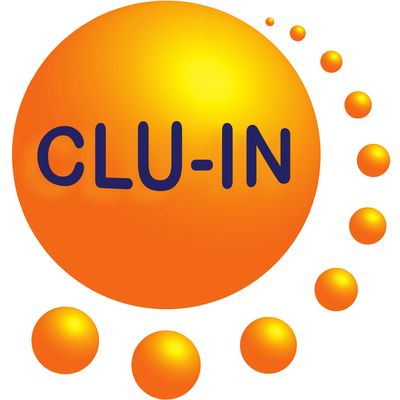Since 1998, The Contaminated Site Clean-Up Information (CLU-IN) website has presented Internet Seminars covering a wide variety of technical topics related to hazardous waste characterization, monitoring, and remediation. For each seminar topic, we have selected the highest-quality offering for placement in our archives. Beginning in May 2005, we began offering these archives via podcast, and this feed contains all seminars archived in the last 6 months. For a complete list of seminars archived since 2000 and videos of selected seminars archived since 2012, please visit http://clu-in.org/live/archive/. Our Rehabilitation Act Notice for reasonable accommodation is available at http://clu-in.org/training/accommodation.cfm. CLU-IN was developed by the U.S. Environmental Protection Agency (EPA) but is intended as a forum for all waste remediation stakeholders. For more information and to view upcoming live offerings, please visit http://clu-in.org/live/. For a complete list of RSS feeds available on CLU-IN, please visit http://clu-in.org/rss/about/.
http://www.clu-in.org/live/archive
Gesamtlänge aller Episoden: 14 days 9 hours 4 minutes
Slides for "Connecting the Science to Managing LNAPL Sites a 3 Part Series - Part 1," May 2, 2019
Connecting the Science to Managing LNAPL Sites - 3-Part Series The newly updated LNAPLs (Light Non-Aqueous Phase Liquids) 3-part training course series is based on the ITRC guidance: LNAPL Site Management: LCSM Evolution, Decision Process, and Remedial Technologies (LNAPL-3, 2018) and focuses on connecting the science to managing LNAPL sites and helping you: Build upon your Understanding of LNAPL Behavior in the Subsurface (Part 1) Develop your LNAPL Conceptual Site Model and LNAPL Remedial...
Audio for "Connecting the Science to Managing LNAPL Sites a 3 Part Series - Part 1," May 2, 2019
Connecting the Science to Managing LNAPL Sites - 3-Part Series The newly updated LNAPLs (Light Non-Aqueous Phase Liquids) 3-part training course series is based on the ITRC guidance: LNAPL Site Management: LCSM Evolution, Decision Process, and Remedial Technologies (LNAPL-3, 2018) and focuses on connecting the science to managing LNAPL sites and helping you: Build upon your Understanding of LNAPL Behavior in the Subsurface (Part 1) Develop your LNAPL Conceptual Site Model and LNAPL Remedial...
Slides for "Geospatial Analysis for Optimization at Environmental Sites," Apr 25, 2019
Optimization activities can improve performance, increase monitoring efficiency, and support contaminated site decisions. Project managers can use geospatial analysis for evaluation of optimization opportunities. Unlike traditional statistical analysis, geospatial methods incorporate the spatial and temporal dependence between nearby data points, which is an important feature of almost all data collected as part of an environmental investigation...
Audio for "Geospatial Analysis for Optimization at Environmental Sites," Apr 25, 2019
Optimization activities can improve performance, increase monitoring efficiency, and support contaminated site decisions. Project managers can use geospatial analysis for evaluation of optimization opportunities. Unlike traditional statistical analysis, geospatial methods incorporate the spatial and temporal dependence between nearby data points, which is an important feature of almost all data collected as part of an environmental investigation...
Audio for "Long-Term Performance of Biochemical Reactors for Passive Treatment of Mine-Impacted Water," Apr 23, 2019
This webinar will present an overview on the background, history and principles on the use of biochemical reactors (BCRs) to treat mine-impacted water. This will include a detailed review of the configuration, operation and performance of a typical BCR system and will provide data and observations from two long-term (>8 years) operating BCR systems as examples...
Audio for "Biogeochemical Interactions Affecting Bioavailability for in Situ Remediation: Session I - Innovative Approaches for Chlorinated Compound Bioremediation in Groundwater," Apr 22, 2019
This webinar series will feature individual research projects funded by the NIEHS Superfund Research Program (SRP). In 2013, the SRP initiated a targeted research program to better understand how contaminants in the environment are affected by complex biological, geological, and chemical processes...
Slides for "Petroleum Vapor Intrusion: Fundamentals of Screening, Investigation, and Management," Apr 11, 2019
Chemical contaminants in soil and groundwater can volatilize into soil gas and migrate through unsaturated soils of the vadose zone. Vapor intrusion (VI) occurs when these vapors migrate upward into overlying buildings through cracks and gaps in the building floors, foundations, and utility conduits, and contaminate indoor air. If present at sufficiently high concentrations, these vapors may present a threat to the health and safety of building occupants...
Audio for "Petroleum Vapor Intrusion: Fundamentals of Screening, Investigation, and Management," Apr 11, 2019
Chemical contaminants in soil and groundwater can volatilize into soil gas and migrate through unsaturated soils of the vadose zone. Vapor intrusion (VI) occurs when these vapors migrate upward into overlying buildings through cracks and gaps in the building floors, foundations, and utility conduits, and contaminate indoor air. If present at sufficiently high concentrations, these vapors may present a threat to the health and safety of building occupants...
Audio for "Military Munitions Support Services - Risk Management Method for MMRP," Apr 3, 2019
This session is focused to present findings from trial use of the USACE Risk Management Method for MMRP sites, with results from multiple case studies and programs. Session will summarize positives, as well as challenges and identify areas for improvement. To view this archive online or download the slides associated with this seminar, please visit http://www.clu-in.org/conf/tio/m2s2fy19-2_040319/
Slides for "Long-term Contaminant Management Using Institutional Controls," Mar 21, 2019
Institutional controls (ICs) are administrative or legal restrictions that provide protection from exposure to contaminants on a site. When ICs are jeopardized or fail, direct exposure to human health and the environment can occur...
